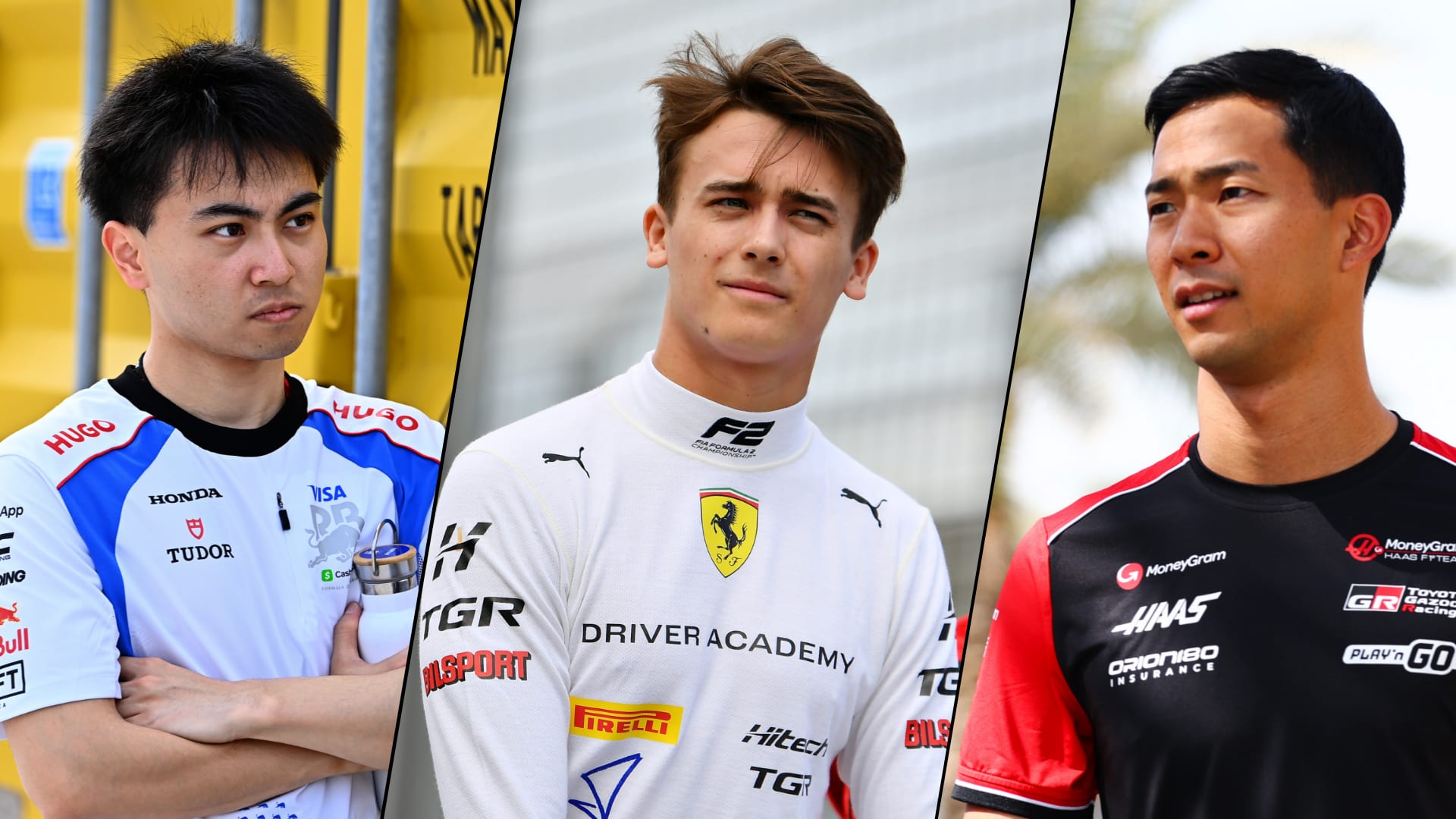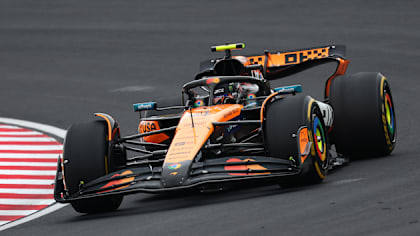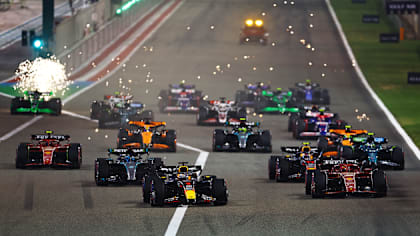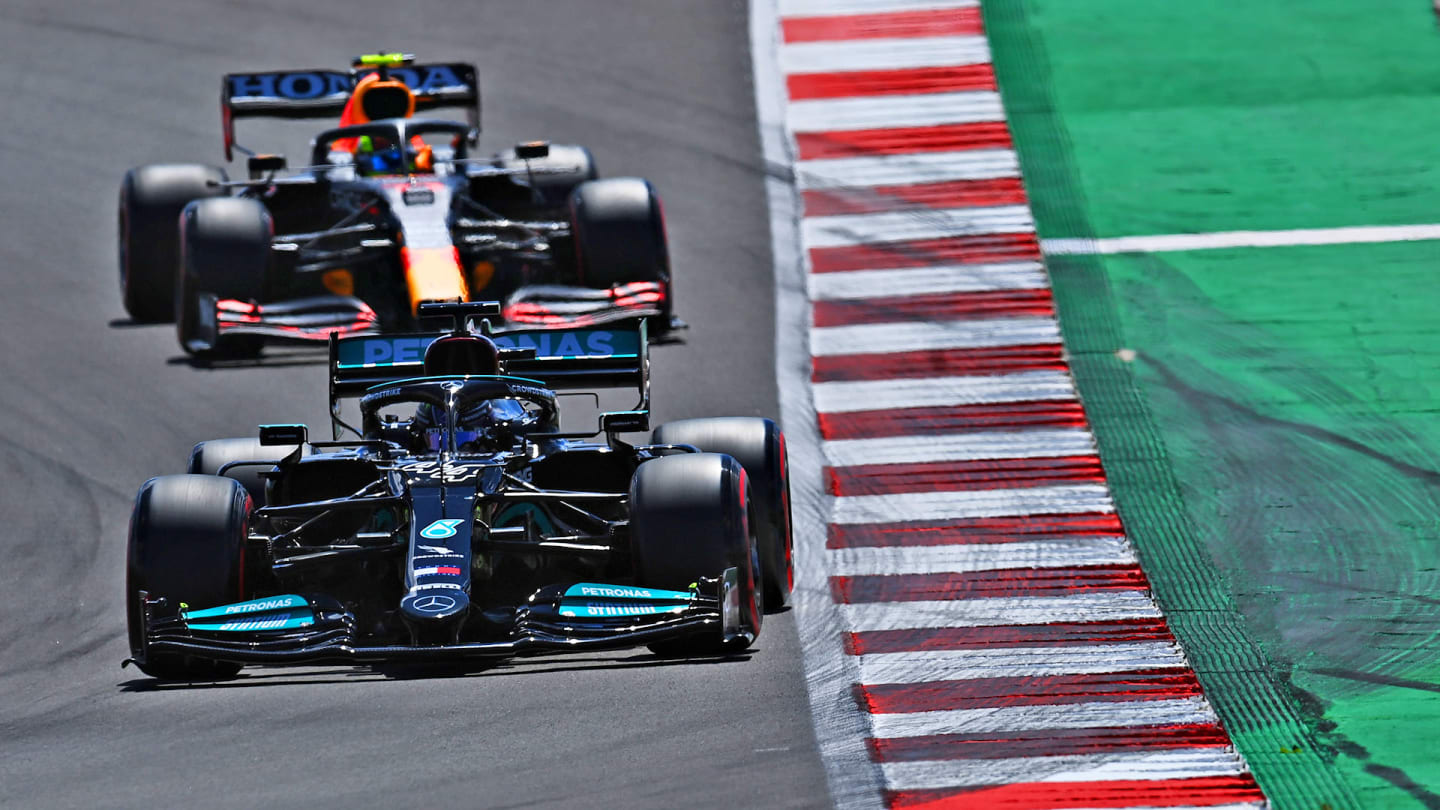
Feature
STRATEGY GUIDE: What are the possible race strategies for the Portuguese Grand Prix?

Share

Tricky track conditions and mixed starting tyres at the front of the field delivered a thrilling start last year at Portimao. So could we be in for a repeat this time around? Let’s take a look at the different strategic options for today’s Portuguese Grand Prix…
What are the likely strategies for the frontrunners?
A bit like at Imola, the one-stop will be the preferred option for the drivers at the front, with the top four all starting on the medium compound tyre. Although it is a low-grip surface and the drivers are sliding around a lot, it does mean it has been pretty kind to the tyres and that means they can try and run as long as they like.
What will be crucial will be the opening laps, where we saw a year ago the warm-up of the soft tyre was so much better than the medium in cold and damp conditions, allowing Carlos Sainz to take the lead with ease and Kimi Raikkonen to gain an astonishing 10 places in 15 corners.
For the top four the situation is the same as they all start on mediums, so if there are similar conditions then the biggest threat will be Sainz once again in fifth – this time in a Ferrari rather than a McLaren. But assuming it’s a dry and warmer start then the tyre situation actually throws up an intriguing opportunity.
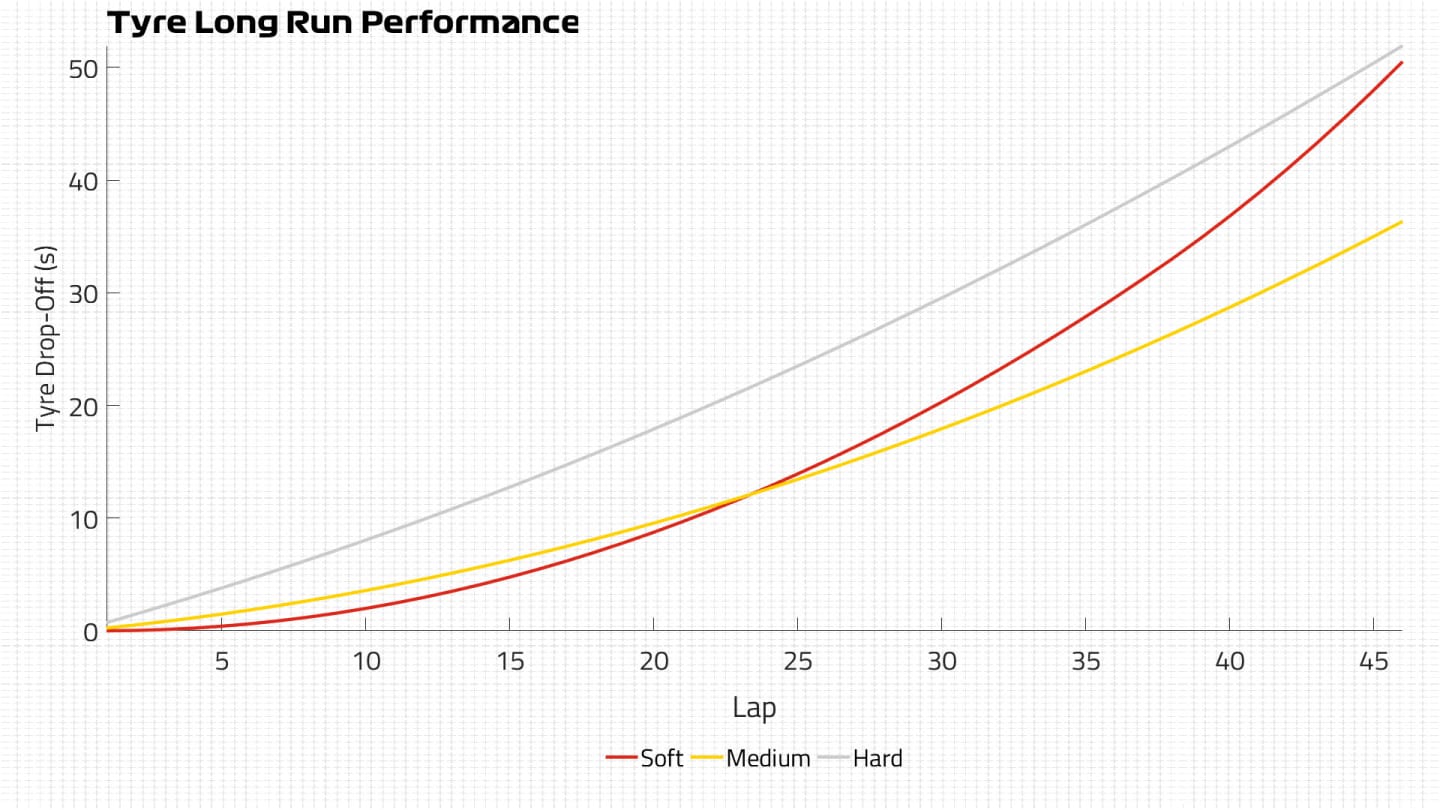
With all three compounds usable as a race tyre but the medium and soft both lasting well, the soft is usable for half of the 66-lap race if required. That means any time from Lap 27 onwards could see the leaders choosing to pit in order to try and undercut for track position. The risk here is that if they are caught by a quicker car, the two DRS zones are likely to make it easier to overtake than Imola, so there’s a balance to be found.
The ideal pit window is any time from Lap 27 up to Lap 38, so there could be a decent offset between those looking for a quick gain and those hoping to have more tyres left at the end of the race.
How about the rest of the top 10?
Unlike in the opening few races, there’s an anomaly in the pack when it comes to the rest of the top 10, as Charles Leclerc will also start the race on medium tyres from eighth on the grid. Leclerc was determined to qualify on that tyre and risked a final attempt when in danger in Q2 but managed to progress, while the rest of those advancing were forced to switch to the softs to secure their place in the top 10.
So Leclerc will be looking to run longer than those around him even if tyre degradation means there’s less of an advantage today, with the key being the warm-up on the opening laps. For those on the softs, it’s still likely to be a decent opening stint length, with a stop around Lap 20 opening up the potential to switch to mediums until the end of the race.
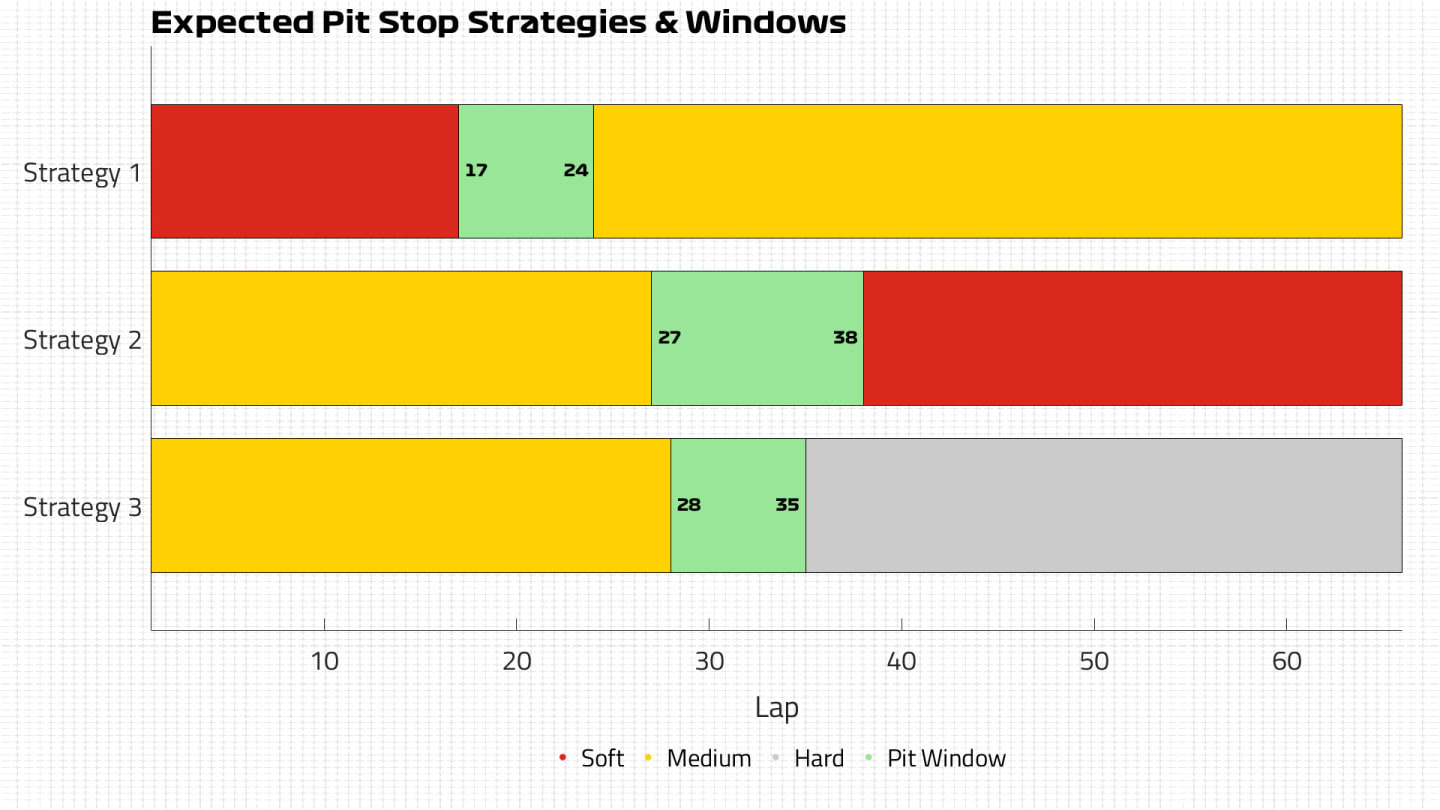
For anyone struggling with their soft tyres early on and needing to make a pit stop before or around Lap 15, the hard compound is an option to safely make it to the end of the race, but provides less grip on the tricky surface so won’t be the ideal choice.
What are the options for the bottom half of the field?
When we look outside the top 10, the options are pretty straightforward. Although all three tyres are usable, starting on the hards is a real risk given the issues with warm-up and low grip, so it would be a real curveball for anyone to opt for that strategy – only one driver did so last year.
The soft-medium strategy is predicted to be the fastest but doesn’t offer quite as much flexibility given the need to pit earlier. That doesn’t mean it will be discarded based on warm-up issues – which could prove even more important in a competitive midfield – and all those outside the top 10 have the benefit of starting on new rather than used tyres, providing a further advantage.
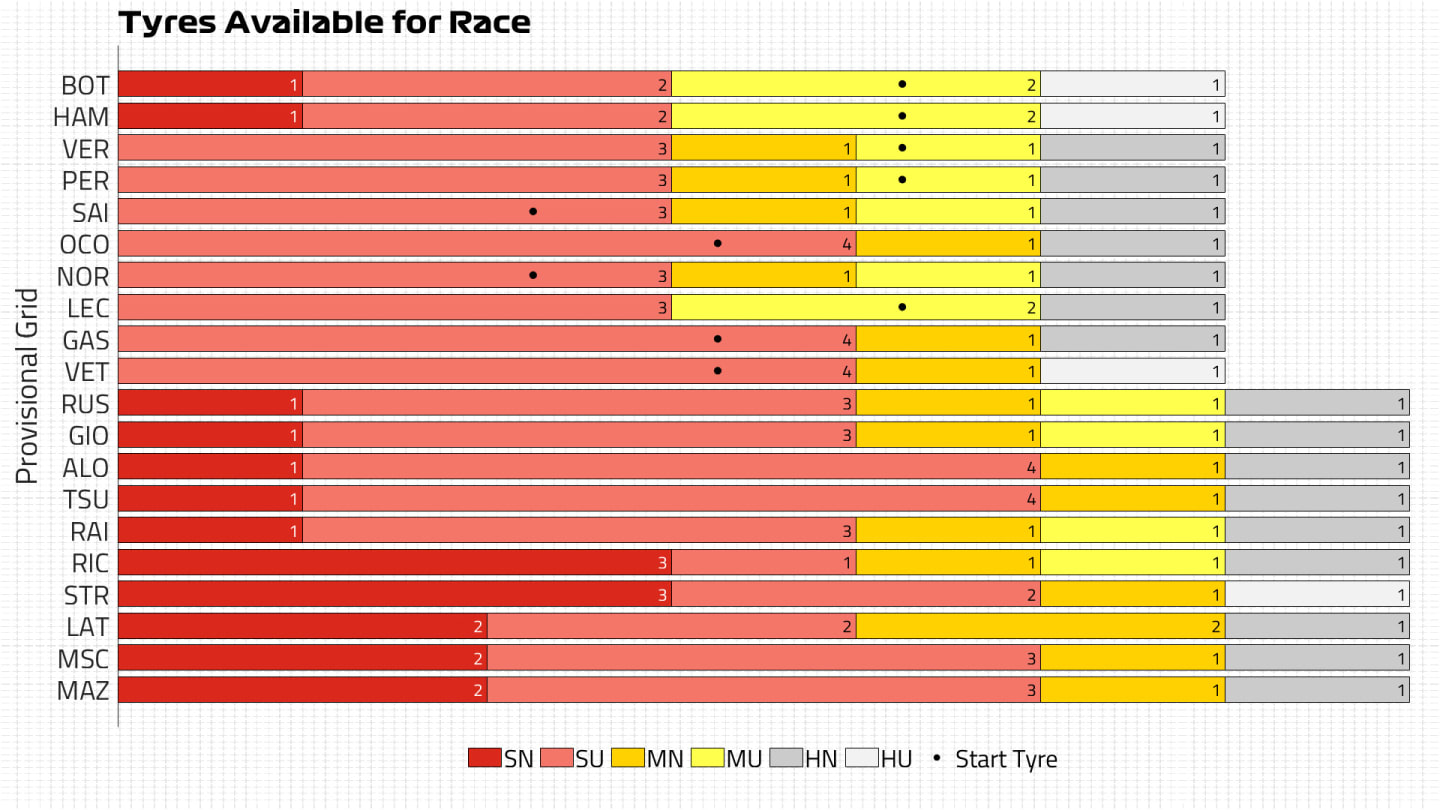
SN = Soft new, SU = Soft used, MN = Medium new, MU = Medium used, HN = Hard new, HU = Hard used
The medium is still likely to be chosen by more runners outside the top 10 as they can follow the above plan from the leaders to run long enough to switch to softs, but would also be left with a shorter stint on hard tyres if they felt they couldn’t make the mediums last long enough. In that scenario, an opening stint of 28-35 laps would likely see the safer choice of hards taken at the one pit stop.
Wait, but what’s the weather doing?
Unlike Imola, it’s actually playing ball for the strategists today. The temperature looks like being the warmest it has been all weekend with a high getting close to 25C, which will also increase track temperatures and help with tyre warm-up.
Instead of rain, the other aspect of the forecast that teams will be focused on is the wind speed, with gusty conditions making the cars tough to handle all weekend. That looks set to continue, which could lead to errors, incidents and potentially Safety Car periods that could open up different pit stop opportunities.
If there’s a Safety Car in the first third of the race, teams might take the chance for a free stop and switch to hard tyres to run to the end.
YOU MIGHT ALSO LIKE
News ‘My Mum really cares about it’ – Antonelli on balancing F1 with schoolwork as rookie reveals his least favourite subjects
News McLaren, Deloitte UK and FIA announce Circularity Handbook to improve sustainable practices in developing and building F1 cars
Feature IT’S RACE WEEK: 5 storylines we’re excited about ahead of the 2025 Bahrain Grand Prix
Feature BAHRAIN GRAND PRIX – Read the all-new digital race programme here
